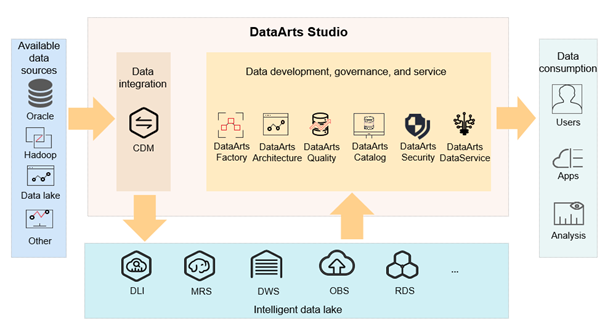In this article you will read about
- how you can support your path to a data-driven enterprise with the Open Telekom Cloud,
- which Open Telekom Cloud service you can use to introduce efficient data governance, and
- what other functionalities DataArts Studio contains.
Formerly actions, today data: Data-based decisions in the "data-centric enterprise" are the big vision for business in the future. Decisions are no longer based on gut instinct, but are made on the basis of data analyses. And artificial intelligences, the great productivity assistants of the future, devour insane amounts of data in their hunger for training. These are just two examples of the outstanding importance of data.




